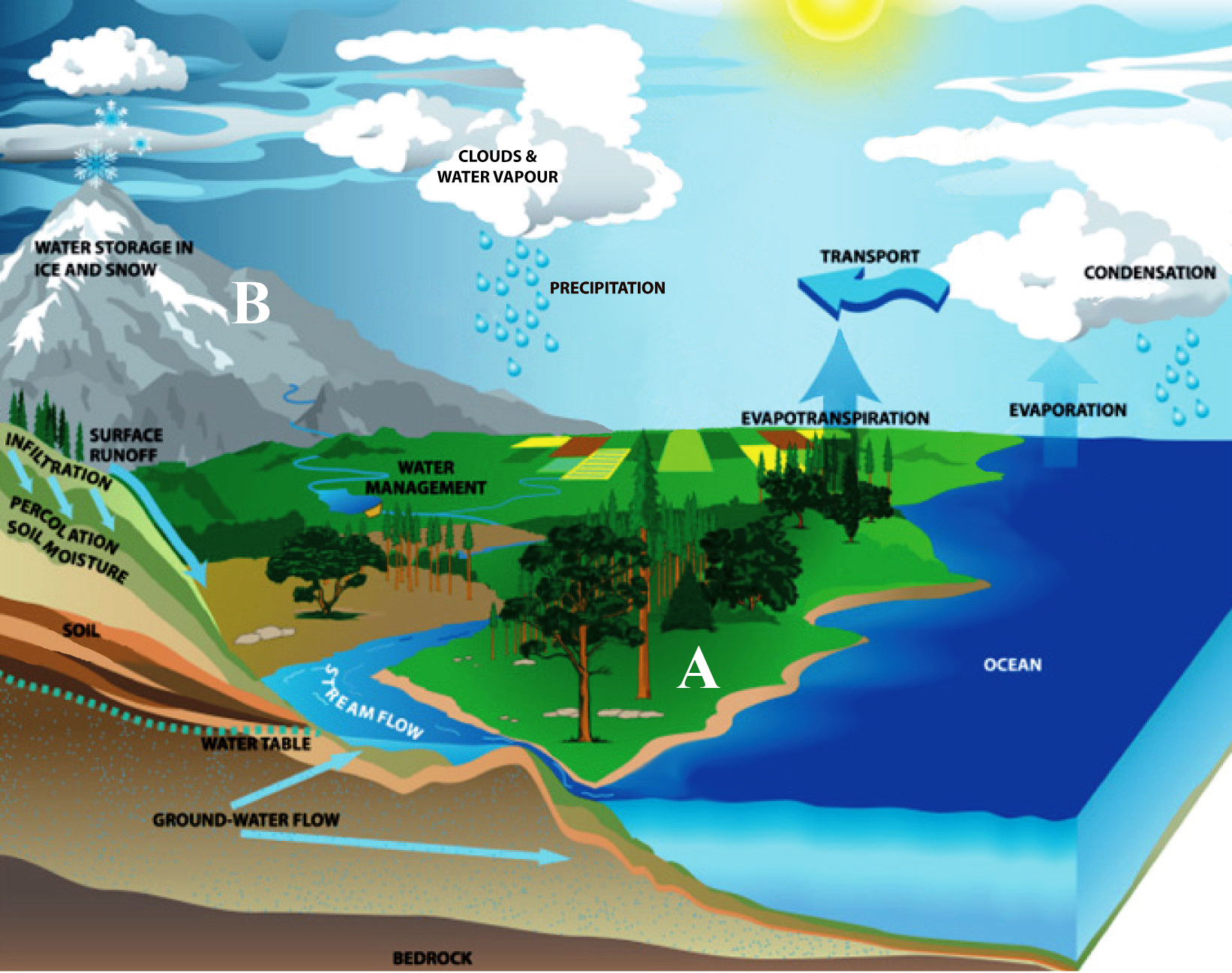| Date | May 2011 | Marks available | 6 | Reference code | 11M.2.bp.1 |
| Level | SL and HL | Paper | 2 | Time zone | |
| Command term | Explain | Question number | 1 | Adapted from | N/A |
Question
The diagram shows the main features of the hydrological cycle.

[Source: http://allritewaterconditioning.com/prosite/Whats_In_your_Water]
Describe two conditions at point A which would make infiltration rates higher than at point B.
Explain the consequences of a decrease in the amount of water stored in ice in the hydrological cycle at any stage.
“Strategies adopted to meet the competing demands for water are not always effective.” Discuss this statement with reference to one named river basin.
Markscheme
Possible answers could include interception by vegetation, slope angle, snow melt, non-frozen ground, soil characteristics (soil porosity, soil infiltration capacity), water content of the soil, antecedent precipitation, intensity of the precipitation or any other logical answer.
Award 1 mark for identifying each factor and a further 1 mark for how it influences infiltration.
Possible consequences may be human and/or physical. The human consequences are likely to be negative: water insecurity, changes in tourism, coastal inundation, environmental refugees. There may be short-term benefits, for example, increased river flow, accessibility to more grazing lands.
Responses may mention arctic ice melt, new shipping routes, new sea floor exploitation, retreating land ice can increase agricultural land area.
Physical consequences could include: rising sea levels caused by ice melt, retreat of glaciers and ice shelves/ice caps caused by global warming, flooding in low-ying areas, drowned features on coastlines (resulting from eustatic changes in sea level) or emergent features (resulting from isostatic rebound).
At least two different consequences must be explained for the award of full marks. Candidates may choose to explain two consequences in depth or more than two in less depth.
Responses will depend on the river basin chosen.
The basin should be named and located (if more than one basin is used, credit should be given to the example which answers the question most effectively). The competing demands should be outlined depending on which basin is named.
The strategies (such as dams, reservoirs, water rationing, water pricing) adopted in the basin to meet the competing demands should be outlined. The successes and, if relevant, failures of the management strategies should be discussed. Discussion on whether the strategies are effective depends on the view of the stakeholder. The best responses may reflect this.
Answers that do not refer to a named river basin, or which focus on one side of the argument, should not move above band D. To access markbands E and F, the strategies should be effectively evaluated.
Marks should be allocated according to the markbands.
Examiners report
Some candidates overcomplicated matters by referring to rock type and permeability when there was no evidence to support this on the diagram, but the concept of infiltration capacity was well understood.
This was generally well answered. Candidates wrote about a range of consequences, notably flooding and sea-level change (though few referred to drowned or emergent coastal landforms that could result from consequent eustatic or isostatic changes). However, some candidates failed to go into detail – that would be alright if they had a large range of consequences.
There were some very good answers which dealt with a named drainage basin. However, some candidates did not identify a basin – nor a strategy – and identified conflicts over access to water, for example, Israel and Palestine. Others wrote about the advantages and disadvantages of large dams – which is relevant – but needs to go further into strategies. Competing demands could also have been explored in more detail as numerous responses did not identify these with specific reference to the chosen basin.

